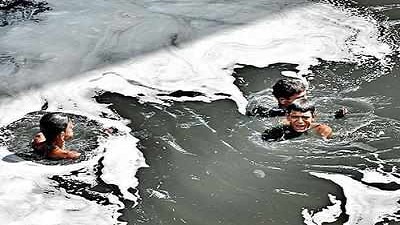Category : Water Pollution | Location : Delhi | Posted on 2021-08-19 00:33:23

Two more drains, which did not meet the prescribed standards of COD, were Molarband (384mg/l) and Metcalf House (256 mg/l) drains. Nine drains failed to meet TSS parameters.
A DPCC official said, “As each drain gets trapped, the improvement in water quality is accessed through these parameters. Many minor drains get merged with major drains and hence, the assessment of water quality helps in identification of minor drains that discharge a heavy load of pollutants ending up in the river.”
According to officials, there are 18 major drains that fall into the Yamuna in the stretch between Wazirabad and Okhla in Delhi. “Of these, trap has been completed in 13 drains and two major drains — Najafgarh and Shahdara — are included in Interceptor Sewer Project where substantial flow of sub-drains under their command areas will be trapped and treated. Further, in situ treatment in these drains are also being proposed,” said a report submitted by the environment department to the Union jal shakti ministry.
The report stated that for the remaining three drains, an action plan has been prepared, which requires construction of sewage treatment plants (STPs) at the mouth of two drains, Mori Gate and Barapullah.
Source: https://timesofindia.indiatimes.com/city/delhi/16-reasons-why-efforts-to-clean-up-yamuna-are-going-down-the-drain/articleshowprint/85442204.cms